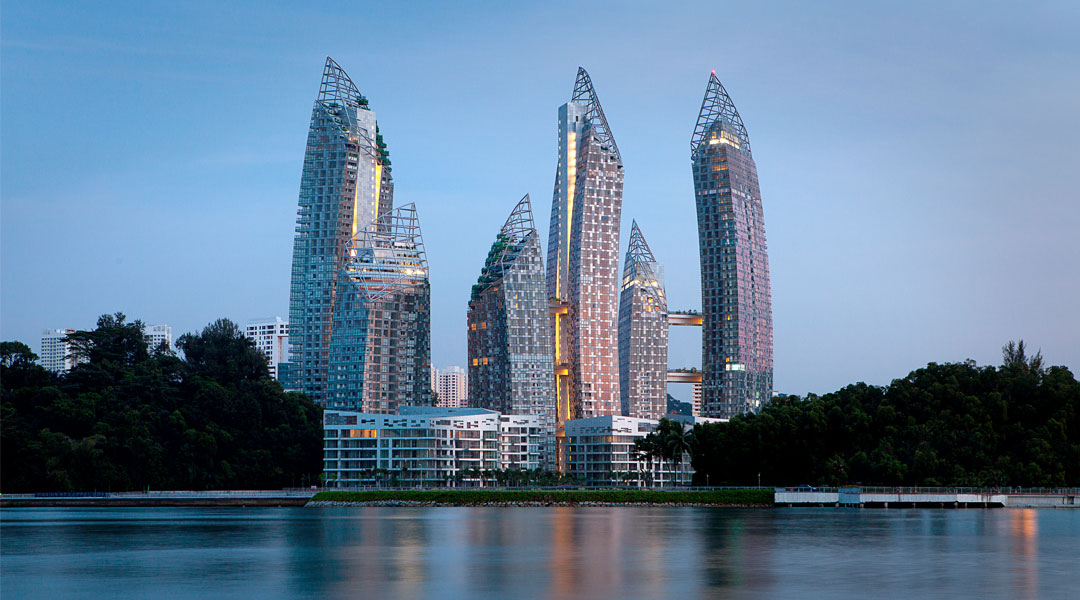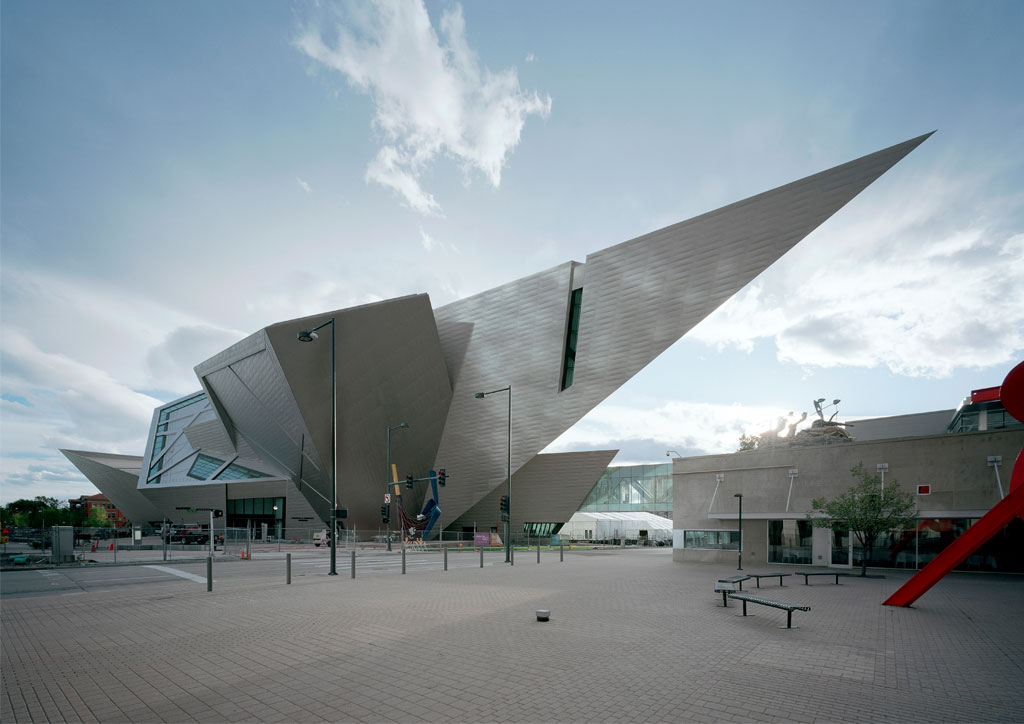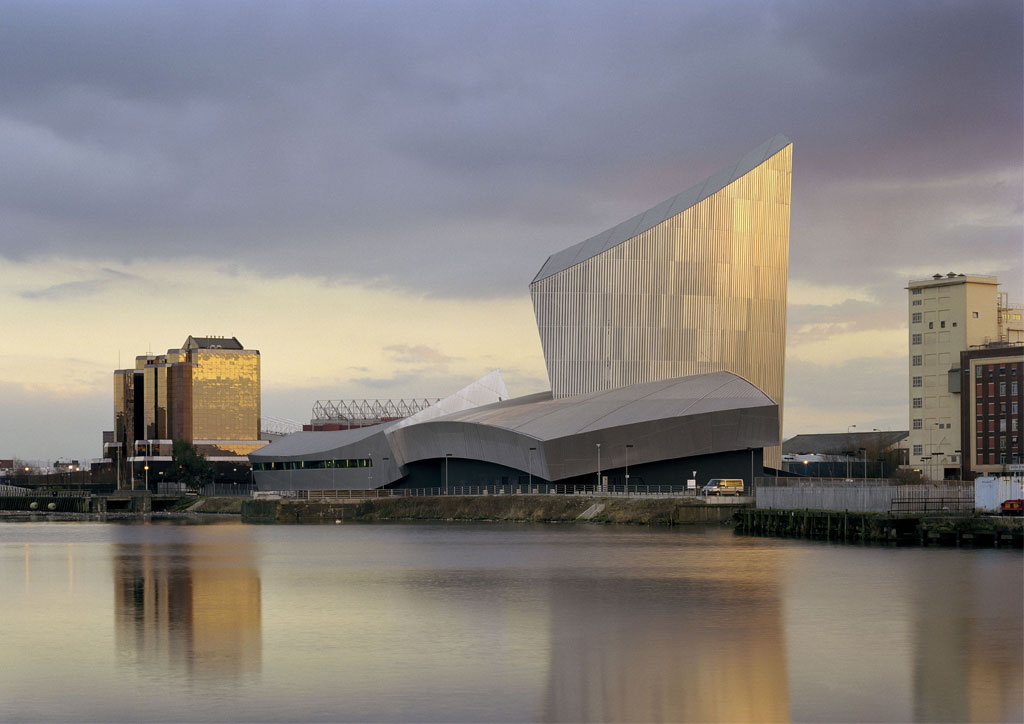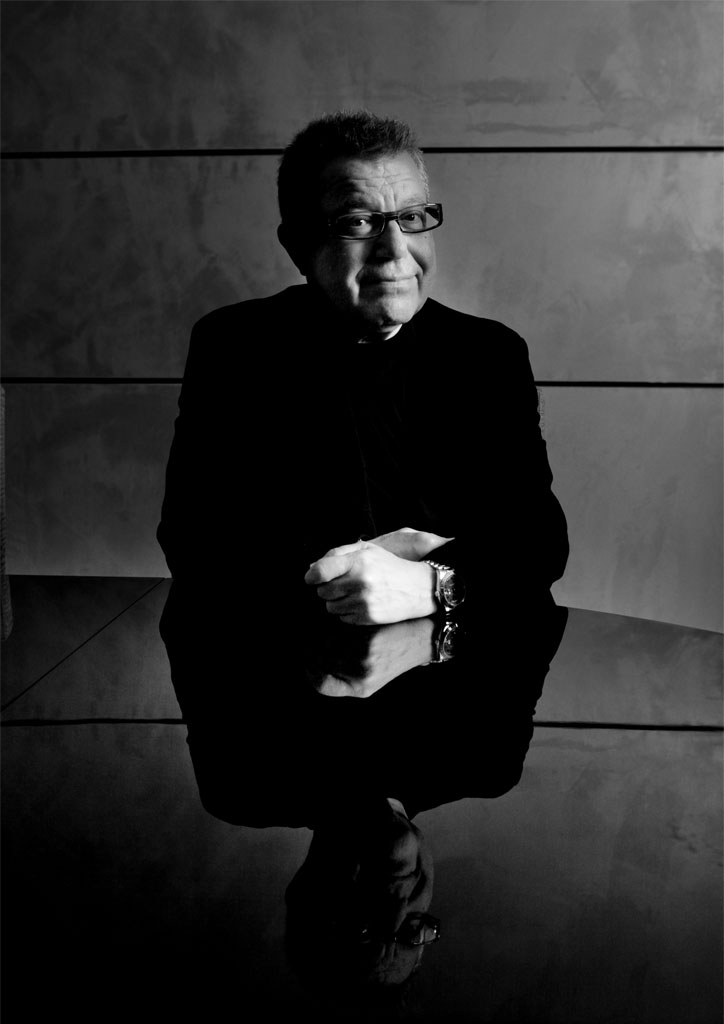
Modern, Not Modernist: A conversation with Daniel Libeskind
BluPrint: I’ve been following your projects, and they basically define the 21st-century city. How do you envision the 21st-century Asian city?
Daniel Libeskind: That’s a provocative question. We know that the growth of cities is primarily in Asia. It will be a huge growth of cities, at a scale that is unprecedented in the history of humanity. The challenge is how to make cities liveable. For example, in Sao Paolo, every day there are 6 million people coming to work to the center to the city, which is the equivalent of the whole population of Uruguay, moving in and out of the city the same day. Of course, the logistical challenge is there but the real challenge to how to create a dignified, beautiful, human environment in a high-density city. That is the central question. How to do it—we have to be specific in our discussion.
What would be your strategies towards achieving this? Well, you have to start not with things, not with machinery, you have to start with human beings; with people. People have to come first. Human beings, with all their complexity, all their desires, and scale. And from there you have to acknowledge that we need open space. We need to address the shrinkage of nature, how to bring nature into a high-density environment which is a three-dimensional notion of nature, no longer just a nature as a horizon.
We need to see that the city development has to do with a lot of other things that were normally not part of city development before, like education, like accessibility to work, jobs, the growth of families, health—both physical and mental well being. These are issues that talk about the ethics of Architecture, which goes beyond planting new roads and making access to the center. We have to think of how, in psychological numerations, cities and built environments can be created. I think that’s really a wonderful question.

Would you say this would be the new definition of Modernism? Or the end of Modernism as the old vanguard defined it? I don’t think there is anymore an “-ism.” I think the -isms have died. Whatever the -ism was, they were based on ideologies that excluded everything they didn’t want to deal with. We see the world as more complicated now, and people are generally not slaves to ideology; they can think freely. Thinking free about the city means redefining the city. It’s not the same city that we have inherited from history. It will not be the same old structure, pattern, or notion of a city. The city will change pretty radically in how it will look, how it will operate, how it will speak to people.
Are you looking at a reorientation of your practice in Asia because of this? No, I’ve been working in Asia for a time—I just designed a city in the center of Korea, in Seoul, for many hundreds of thousands of people to work, to live, to play. Of course, it’s different when addressing a European or American context, but every place needs creative input. Certainly Asian cities or South American or cities in Africa have to be re-thought from the ground up.
I was quite entertained and the same time struck by the profound answer you gave yesterday to a student from the University of the Philippines when you said that in every city you build they think they are the center of the universe. Could you talk some more on that? [Libeskind chuckles] It simply means we are interconnected in more ways than it appears. We are of course all human beings and that is why we can understand each other and work together. And I think in a global world, the primary issue is to give people access, not only to space but to knowledge. That means an open society in which people can thrive, in which diversity can thrive. I think those two things are in constant play, interconnectedness and pluralism or diversity.
READ MORE: Vernacularization in Philippine Modern Architecture (part 1)
Some cultural hardliners are worried that this notion of interconnectedness and the use of one language will result in the homogenization of design and culture… I see no threats in either interconnectedness or in plurals. It’s the best thing in the world! I think an open society that allows people to achieve their dreams is the only society that really works. We can create artificial societies that work well within limited parameters, but if we look at the development of the 21st century, we see the impetus that everyone wants to have the same things: to be able to develop themselves, to be able to think on their own. I think that’s how communities are formed. Communities are not formed from the top down, by telling people to be in a community. It can only be formed when people truly share values, share their lives. They share dreams. So that’s what I mean when I say we are interconnected and we are the same even in our diversity.
So would this be a redefinition of what identity is then? Yes, because identity in the old sense was created by someone for someone else. You know, by ideologies. Ideologues created identities for other people. But as I said, we don’t really share this concept. People have to create their own identities, and identities also change, they transform themselves people are able to thrive and progress in their own lives.
In the age of globalization, homogenization is to some extent happening. But homogenization does not arise from addressing the ideals and values that people share. Some architects complain that some clients keep asking them for the same thing, they want a replica of a famous building. That’s not true for me at all. Each of the buildings I have designed is extremely specific and couldn’t be plunked down in another setting.
READ MORE: Vernacularization in Philippine Modern Architecture (part 2)
I want to touch on what you said yesterday that you “capture the soul” instead of the culture of a city that you are building in. Can you elaborate on this? Shakespeare says somewhere, “There’s more to heaven and earth than in our thoughts.” [Laughs] We have to think of the bigger picture of where we are, vis-à-vis everything that is happening. I’ll give you a good example. People talk a lot about change, you know, because of the Internet, instant communication, and the rapid, complete and utter changes that occur from minute to minute, from second to second, which is true. Very few people are talking about stability. We have a very stable night time, day time, we have a very stable cosmos that has not changed for some billions and billions of years.
I am just so interested in this metaphysical stability! Yes, stability is underestimated. Today it is overshadowed, it is…
Underrated. Yes, underrated. Neglected! You know, in Asian societies, stability was their core poetry. That there is this world that lives on. The Asian worldview is that we are not alone—very different from the Western worldview. And the reality is not the reality that most people take as reality. Most people take reality as that which they can control, but in reality, reality is just the opposite—everything we cannot control is what’s real! And so, when you design a project, you have to work with reality, which is not just what we can manipulate but that which we cannot, which is a partner to the design process. Whether you talk about the earth, the sky, the light, that’s not something to be manipulated by us.

And the light in one place is different from light in another. Absolutely. We know that light is venerated all over the world by everyone when they get up in the morning. You don’t have to read that in a book. When you open your eyes in the morning you see that you are alive. Light is unique in each place. I’ve traveled around the world and there’s no place where light is the same. It’s just a character, maybe a character of the space-time finite universe of Einstein. Light is variated depending on the space-time continuum.
So, working with that which one cannot control, it’s a different attitude to design, it’s a more, let me say, homeopathic approach to design. It’s not the invasive surgical approach, where you come in and cut the body and, you know, put an artificial organ. It’s more homeopathic, treating the like with like, not treating with its opposite. For example, when I designed the new plan for Seoul, I didn’t start by imposing a grid from New York.
Unfortunately, it’s the banal way that many designers have now picked up urban design. They transfer one culture to another culture, a kind of a pattern. They say like, look, New York is successful let’s put up a piece of Manhattan in Dubai or whatever, Africa. It’s not a viable way of operating because each place has its own sense and you can’t just impose on it, colonize with a foreign geometry, a foreign genesis and so on…
READ MORE: Forging Modernism: The early years of Leandro Locsin
Is this the reason why your projects, the most popular ones, are so enigmatic? Or shall we say so Libeskind rather than the place? Well, you can’t divide you from a place when you build, if you just build for the moment. The challenge, just as it is in literature and music, is not to be formulaic in one’s work, and artists can indeed produce great bodies of work that are recognizable yet not formulaic, not jaded.
It’s like writing a play for the audience you have. But great plays are never written for the audience you have but the audiences yet to be born. They’re written for a new audience that hasn’t existed before. So that’s the literature we look forward to. Not literature that is written as just a journalistic response to an immediate thing but for someone who’s going to come that we don’t even expect! A stranger!
So you design for permanence. Of course, you have to design for permanence. In America, many societies, the cost of demolition of a building is included in the cost of building a building, because they are really just a wasteful not sustainable type of operation. But don’t you think that buildings, even if their programs are changed, if they are well designed, they can accommodate change? That’s why you have in New York the reuse of buildings built for totally different purposes, which are beloved because they are well oriented, they have good light, they have good floor plates, they have good size. They can be places to live, places to work, places to eat, and I think that is made possible by good architecture.
READ MORE: Wang Shu takes a fresh look at historic and modern design
And good architecture would you say always carries a good narrative? Absolutely, I mean architecture without a narrative is abstract architecture. I never really believed in abstract architecture.
Which among your projects would be your favorite narrative? Each project has a unique narrative because it was built in a unique place. So it’s not the same narrative when you go to Manila, it’s very specific. It’s a different place, a different culture. If you go to Warsaw, you’re in another place, if you go to New York…but again, they’re connected, anyway. People travel, they know more about the rest of the world, people are not living in the Middle Ages, they don’t have to.
How do you curate this narrative? You have to lie down on the ground. [Laughs] Put your ear to the ground and listen!

Did you lie down on our streets? [Laughter] Sure! You have to do something very crazy to get to the bottom of something! But seriously, context is not confined to what is visible. Context could be the history or memory of a place.
What is the narrative for Manila? It’s a young country. It’s a country that’s seen since the 1900s so many changes; languages, dominant colonial power, wars, but it’s a country in the remaking. And I agree with Robbie Antonio when he says it’s the time for the Philippines. It’s true.
We’d like to believe that. Yes, it’s true, I really believe that. It’s not just because I’m working here that I say that. But it’s true because its location, its potential, its people make it inevitable.
READ MORE: Lor Calma’s abode debunks Nietzsche’s godless Modernism
Mr. Libeskind, how long have you taught at the University? I’ve had a lifetime in the university! I’m always a visiting professor somewhere.
Do you enjoy mentoring? It’s very important. In the Jewish tradition, teaching is considered as the highest achievement. To pass on knowledge is considered vital—not secondary, not something extra. Ethically, the most important purpose in life is to be able to transmit something profound, something important. I always say I live my life in reverse. In classical literature, people are told to live a very active life first, then your second half should be the meditation on what you’ve done. But I kind of had time to meditate when I was younger. I had a chair in Yale, I was a professor at Harvard, a professor in Chicago, very illustrious schools. I was an artist, I did other things… and before that, I was a professional musician. So I’ve had several different lifetimes. And now I have to catch up on leading an active practice. So it’s a little like the reverse of the way things are done.
Like Benjamin Button! [Laughter] And you’re enjoying yourself? Yes, I am very much enjoying life! My life changed a number of times in a very radical way. When I first won the competition for the Jewish Museum in Berlin, you know that was when I first established my office. I had never built a building before. Not even a small one. When I won Ground Zero [the site of the World Trade Center that collapsed into rubble during the 9/11 attacks], of course, my life also changed.
READ MORE: Creating beauty for others: IP Santos’ work philosophy
I’d like to talk about those two projects. They deal with so much pain. How did you manage that, what was the design process in managing pain? You have to see architecture as something that can and should contribute to healing. Put a kid in a building with bad windows, bad lights, bad acoustics, it leads to an unhappy childhood. In the future, I believe there will be a stronger awareness that design is not just aesthetic, but also has a profound psychological and mental impact on the body.
For these projects that have to do with death, with tragedy, with destruction, you have to bring something positive. I always say, to be an architect you have to be an optimist. You have to look forward to the future, to something better. Because if you just look to the past, the past is irreversible and there’s nothing to be done. But if you consider that we can do better things, can improve things, even after much illness, death and tragedy, then you can live life knowing that things will be better in the future. We live and design for the future, not the past.
Where are you bringing your design in the future? Each project is its own world. Designing Century Spire is a different operation than designing a city plan, a museum. Each project has its own eco-system…and I think that’s what I love about Architecture, it has such diversity within it. It is not just one thing done by one hand, with one thought…that was the old idea then—an architect with one thought, one idea, can do everything.

That’s right! That was the ideology of Modernism. Mies Van Der Rohe said you should only design one building in your life and just keep refining it, and that’s what he did. The Seagram Tower is like the Toronto-Dominion Bank. The Paccardi building is like the National Gallery in Berlin. He thought that was the ideal, the Platonic ideal. You design one ideal building then it can be that building again and again and again…but I disagree.
So you are not a Modernist? Not in that sense, no. I’m modern but I’m not a Modernist. [Laughs]
You’re free. Yes, yes, I am free! I think that’s a good point. We take freedom as a very basic value—I take it, and I think every person should. And that also applies to what you do and how you do it. I think it’s important to give people the liberty to explore, to go into new directions. I think the world will be surprised. As I looked at those young students yesterday, I thought, you know, we will be shocked by what new worlds will be appearing. You know where the great work is going to come from? It’s not going to come from expected places. It’s not going to come from Paris, from New York..or from London. It’s going to come from the Philippines. Some incredible new ideas that nobody expected the world to embrace.
Aww… No, I really mean that. It’s always like that with great things. They don’t come where everyone is looking—
Yeah, it could come from the Bronx, right? [Laughs] If it can come from the Bronx it could come from anywhere! [Editor’s note: Libeskind grew up in the Bronx]
Does music influence your architecture? Very much so!
How so? I don’t think I’ve really stopped my musical performance. I continue to play but with a different instrument. I used to play keyboards. That is my instrument no longer, but architecture. They’re similar because both architecture and music are scientific. Every vibration is precise. There is no “approximately good” song. There is no “approximately right” note, it’s either the right note or the wrong note. Music and architecture are extremely structured. But at the same time, music and architecture appeal not only to the mind but totally impact the emotions. When a song does not appeal to you emotionally, then all you hear are the notes, and it’s a failure. It’s very similar to architecture. It’s a very scientific field, but in the end, the impact is not in abstractions but on the soul.
READ MORE: Visayan Modernism: The Tinderbox by Alex Medalla
What are you going to take back from Manila? Well, I’m going to take back with me a very inspired city with a lot of youthfulness. I’m going to take back the very, very beautiful Antonio family, who really is a wonderful group of people—not every day you get to experience what you have here… That’s special to me. The fact that there is a real ambition here, a great promise and potential that will develop into many things, many good things, exciting things, great things. I believe that.
This interview was first published in BluPrint Volume 4 2014. Edits were made for BluPrint online.
BluPrint thanks Robbie Antonio and Century Properties, Inc., for making this exclusive interview with Daniel Libeskind possible. The interview was held May 29, 2014 at the Century Spire showroom on the 21st floor of Pacific Plaza Tower at Sen. Gil Puyat corner Makati Ave.


